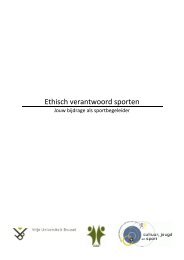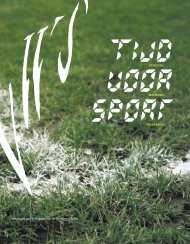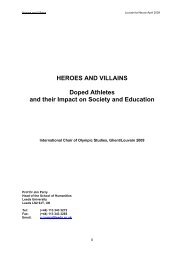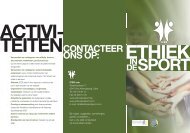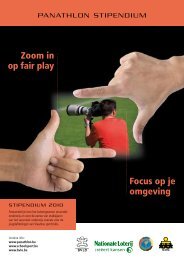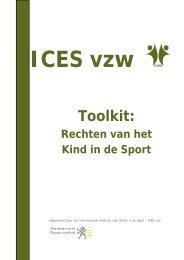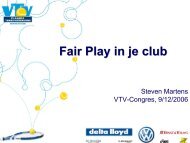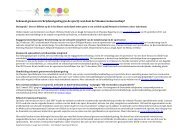Part 3 GLOBAL ISSUES: HARASSMENT AND ABUSE RESEARCH
Part 3 GLOBAL ISSUES: HARASSMENT AND ABUSE RESEARCH
Part 3 GLOBAL ISSUES: HARASSMENT AND ABUSE RESEARCH
You also want an ePaper? Increase the reach of your titles
YUMPU automatically turns print PDFs into web optimized ePapers that Google loves.
symptoms. Lastly, this will only occur within a ‘power-over’ culture of coaching in<br />
which coaches assume a hierarchically superior position over athletes.<br />
The first study focused on interviewing 12 ex-elite child athletes (Male=4,<br />
Female=8) about their retrospective experiences of being coached as elite child<br />
athletes. The interviews were framed to test the theoretical model. These<br />
athletes had all been on World Class Performance programmes or equivalent<br />
and had been identified as elite when they were children (Age of identification:<br />
Mean=13.1yr.) <strong>Part</strong>icipants were asked to reflect on their past experiences as<br />
elite child athletes, so their responses represented the residual impact of their<br />
experiences.<br />
The second series of studies was focused on testing the model with larger<br />
and more diverse populations of athletes. This was achieved through the<br />
development of a new instrument the Sport Emotional Response Questionnaire<br />
(SER-Q) which is a retrospective self-report measure of athlete perceptions when<br />
they were children, of their coaches’ behaviour. The instrument is a 20 item<br />
questionnaire that measures the frequency, emotional response and<br />
performance effect of each item of negative coach behaviour. Each item was<br />
generated from the interview source data from study one.<br />
A total of 502 volunteer participants completed the questionnaire<br />
(Male=326, Female=175; Competitive level: Club=64, Regional=207,<br />
National=133, International=97) who were all student athletes studying Sport<br />
Science at university. <strong>Part</strong>icipants came from a range of sports (N=32) both team<br />
and individual.<br />
Key findings<br />
The results from all the studies confirmed the theoretical model as having<br />
currency within sport. In the first qualitative study, all of the athletes reported that<br />
they had experienced some or all of the negative behaviours from their coach<br />
while they were training as an elite child athlete. Specifically, the behaviours<br />
reported by the athletes as being the most frequently experienced were:<br />
73<br />
73



